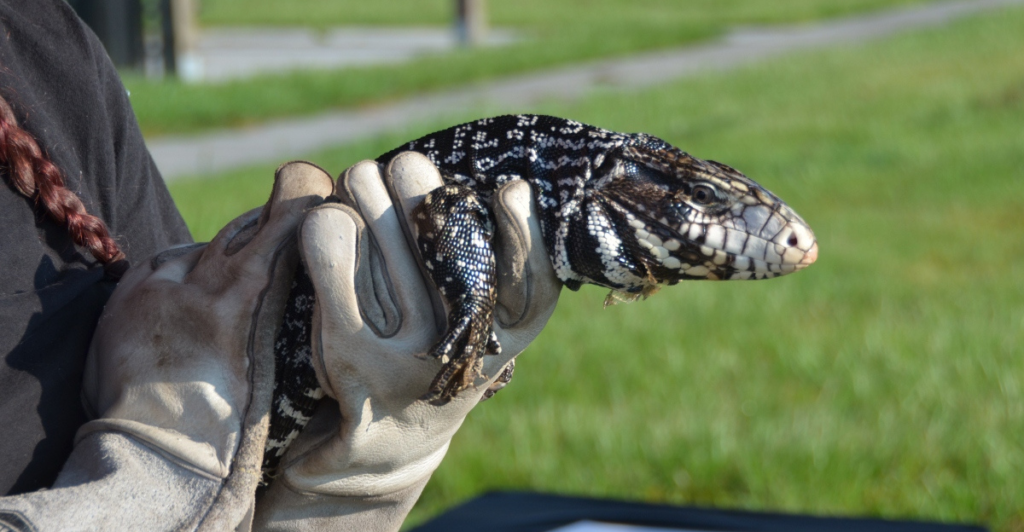
Invasive tegu lizards, especially Argentine black and white tegu, are threatening wildlife on Florida’s Treasure Coast. More than 1,500 tegus have been captured in St. Lucie County, showing that the breeding population is thriving.
Lizards are omnivorous, consuming native species, such as alligator eggs and threatened gopher tortoises, and disrupting the ecosystem. These factors make them one of the greatest challenges for wildlife conservation efforts, as they not only adapt well to Florida’s environment but can also breed here.
The Florida Fish and Wildlife Conservation Commission (FWC) has listed tegus as a high-risk species and banned their ownership and breeding to help mitigate their impact.
The History of The Tegu Lizard
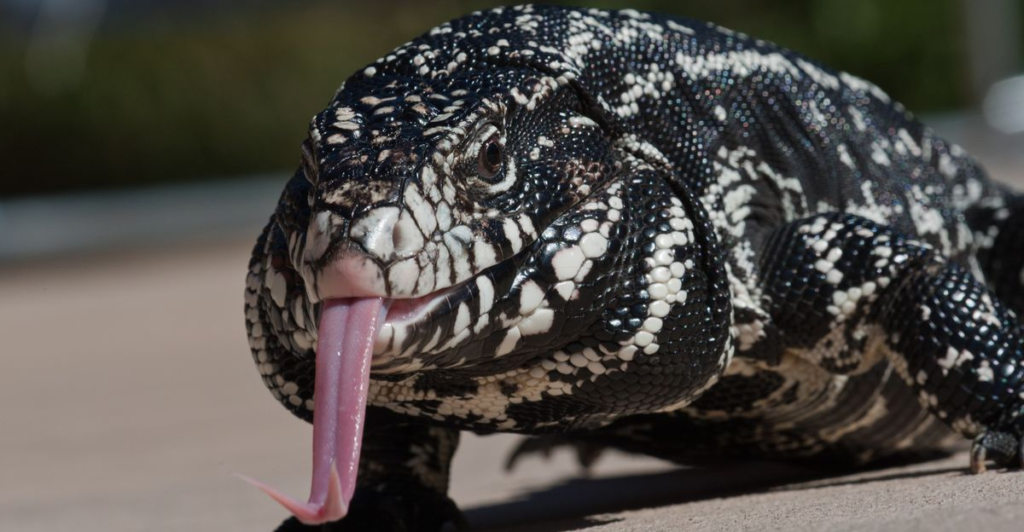
Tegu lizards are most commonly attributed to the exotic pet trade, for which they are released or escaped into the wild of Florida. Once commonly kept as pets, Tegus were released or escaped into the wild, where they established breeding populations.
By 2008, Miami-Dade County was home to a self-sustaining wild population, and by 2017, tegus were documented in Everglades National Park. This history emphasizes the dangers of the exotic pet trade and illustrates the importance of stricter regulations to prevent future invasions. Understanding this history is crucial for developing effective strategies to manage and mitigate the impacts of invasive species.
Ecological Impact
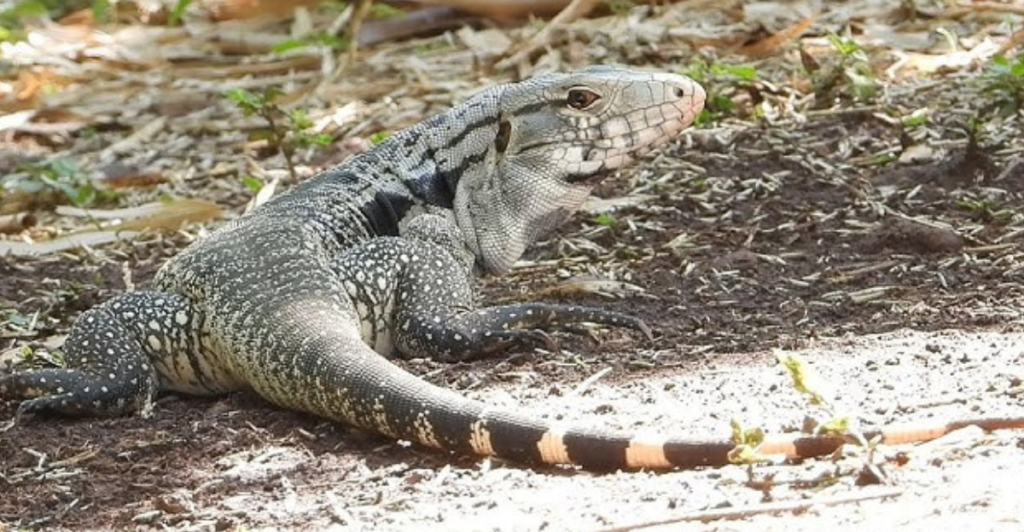
Tegus are proficient predators whose diet consists of vegetables, fruits, insects, vertebrates and crustaceans, posing a serious threat to native wildlife.
Examples of such behaviors include egg eating. They are known to eat the eggs of alligators and gopher tortoises, which has devastating effects on the populations of such species.
Tegus’ ecological effects are compounded by their ability to adapt and thrive in Florida’s subtropical climate. This adaptability allows them to outcompete native species for resources, which only adds to the ecological disturbance caused by their presence.
Current Trends
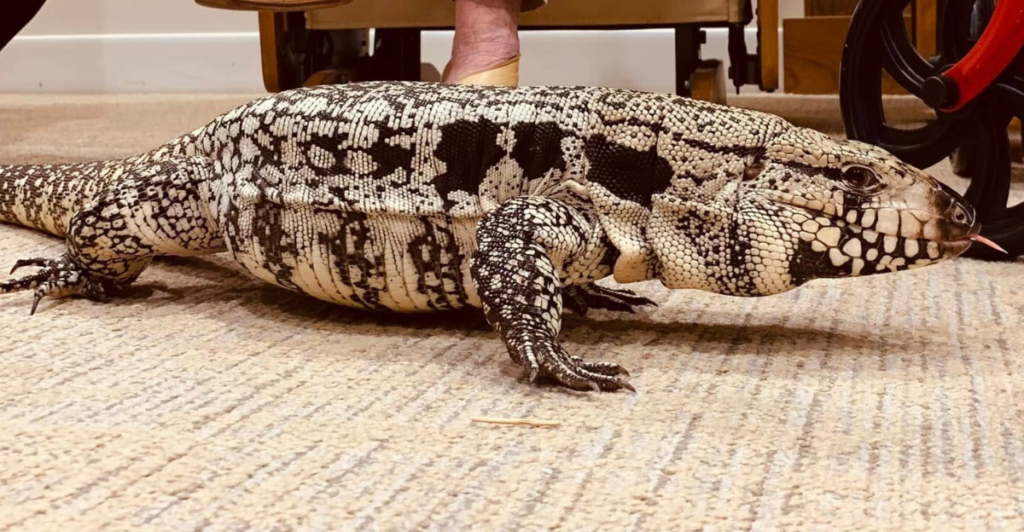
Tegus are proliferating all over Florida, but they’ve been sighted and transitioned in notable numbers in St. Lucie County, many of which are due to the efforts of trappers like Sid Pennington.
The FWC listed tegus as a high-risk species and prohibits their ownership and breeding. Despite such efforts, tegu numbers continue to grow, with more than 18,000 removed from the wild across the state.
The concentration of tegus in St. Lucie County highlights the need for targeted trapping efforts and public awareness campaigns to manage their spread effectively.
Management Challenges
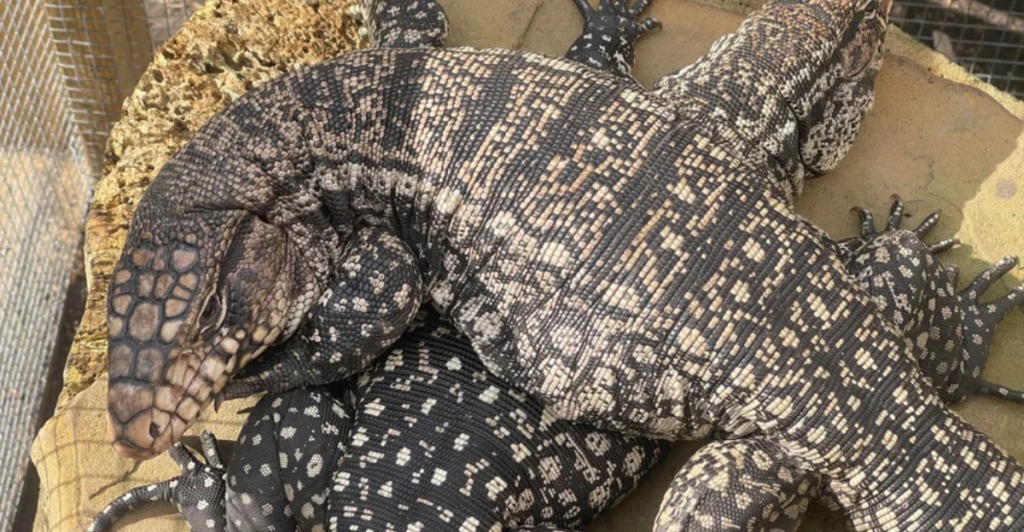
Managing tegus populations is challenging due to their adaptability and vast area they inhabit. Ongoing trapping efforts are important, but the sheer number of tegus — and their rapid spread beyond current hotspots — are a major hurdle.
It is critical for effective management because it provides the information needed to prioritize the areas where trapping needs to occur. However, this relies on public awareness and reporting sightings of the lizards. In addition, successful control strategies require collaboration between local communities and wildlife authorities.
Proposed Solutions
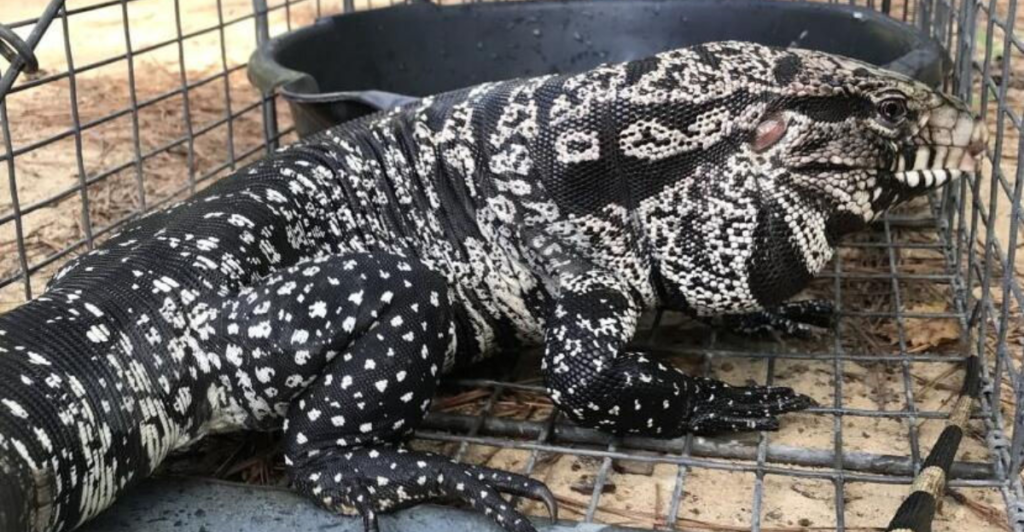
The FWC is seeking public feedback on the proposed rule changes, including caging requirements for juvenile tegus and prohibiting pet permit renewals for certain non-native species.
These measures are designed to prevent additional releases into the wild and lessen the reproductive potential of invasive species. Public education campaigns are also important; people need to be educated about the potential dangers of releasing non-native pets into the wild. By engaging the public in these efforts, the FWC can work on implementing strategies that are more effective in managing the population.
Economic and Social Implications
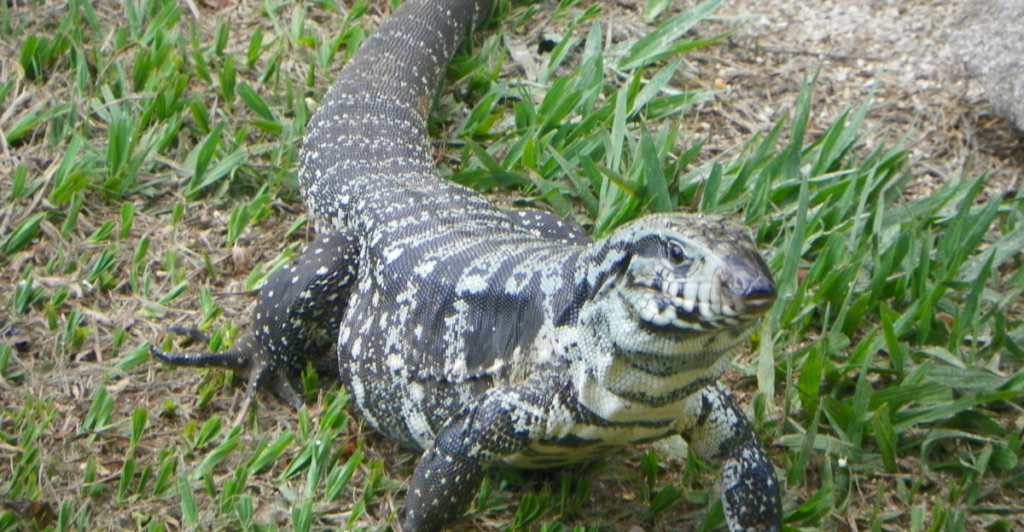
Invasive species such as tegus can have significant economic consequences, affecting local ecosystems and even affecting tourism and agriculture.
Socially, the presence of invasive species can alter community perceptions of wildlife management and conservation efforts. This will require a multi-faceted approach that involves both economic and social strategies.
This includes educating the public about the economic advantages of preserving native ecosystems and the societal resposibility of controlling invasive species.
No Benefits
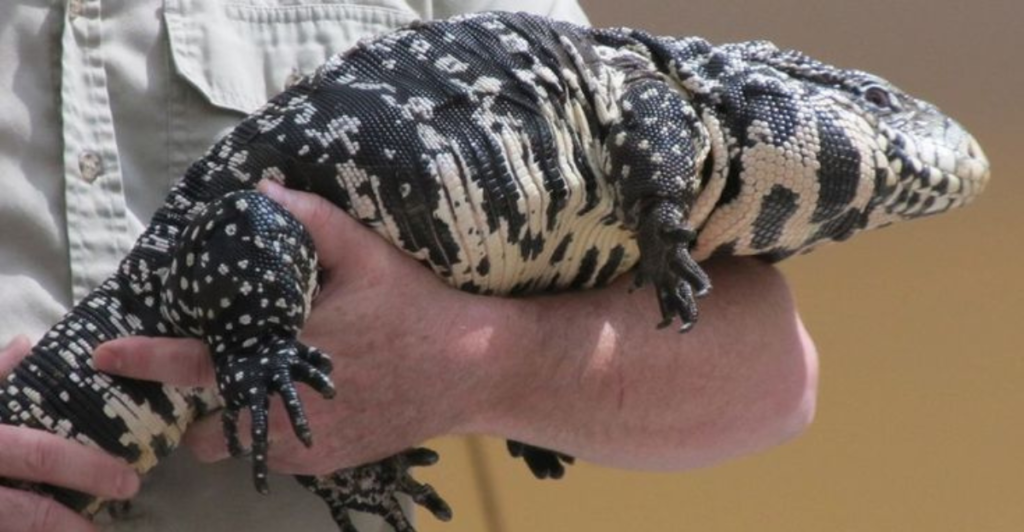
Some argue that an invasive species can occasionally occupy ecological niches or provide unintended benefits. However, in the case of tegus, their negative impacts on native species and ecosystems far outweigh any potential benefits.
This calls for the recognition of the complexity of invasive species dynamics and the requirement of targeted management measures. Though certain invasive species have positive impacts, the threats posed by tegus require coordinated control and eradication methods.
Effective Conservation Strategies Needed
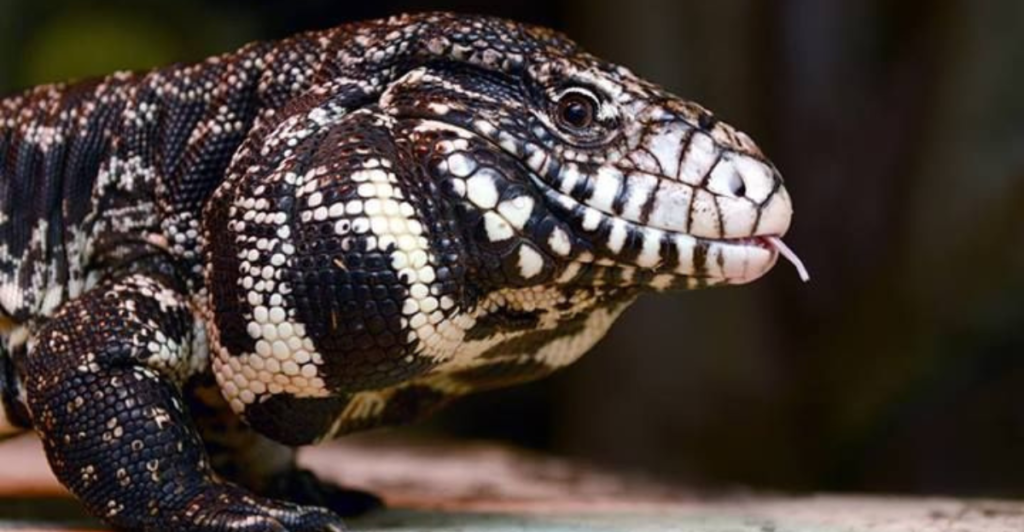
Invasive species like tegus are likely to spread more as climate change and human activity continue to reshape ecosystems. Projections indicate that, if left unmanaged, tegu populations may spread outside of established hotspots, becoming an even more significant threat to Florida’s biodiversity.
This underscores the dire need for effective conservation strategies to counteract these effects. Sustaining native ecosystems requires an understanding of present trends and future possibilities and developing strategies that work toward the long-term health of native ecosystems while also considering potential future scenarios.
A Significant Threat
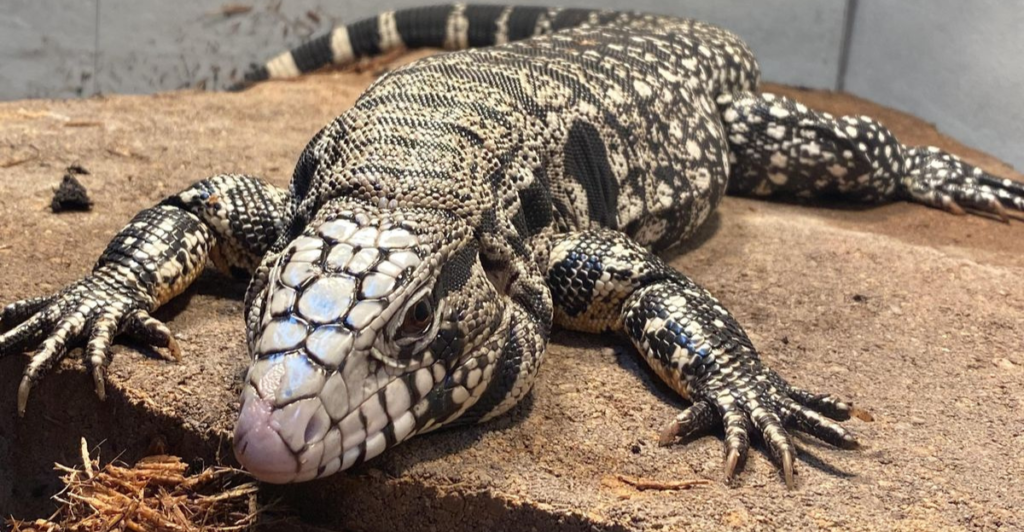
In conclusion, invasive tegu lizards pose a threat to wildlife on Florida’s Treasure Coast, especially in St. Lucie County. Their adaptability, wide-ranging diet, and ability to establish breeding populations make them formidable invasive species.
Managing their spread will require a combination of trapping, public awareness, and regulatory changes. As the situation continues to evolve, it is crucial for stakeholders to remain vigilant and proactive in addressing this ecological challenge.
By working together, Florida can reduce the impacts of tegus and safeguard its native wildlife.
Explore more of our trending stories and hit Follow to keep them coming to your feed!

Don’t miss out on more stories like this! Hit the Follow button at the top of this article to stay updated with the latest news. Share your thoughts in the comments—we’d love to hear from you!







